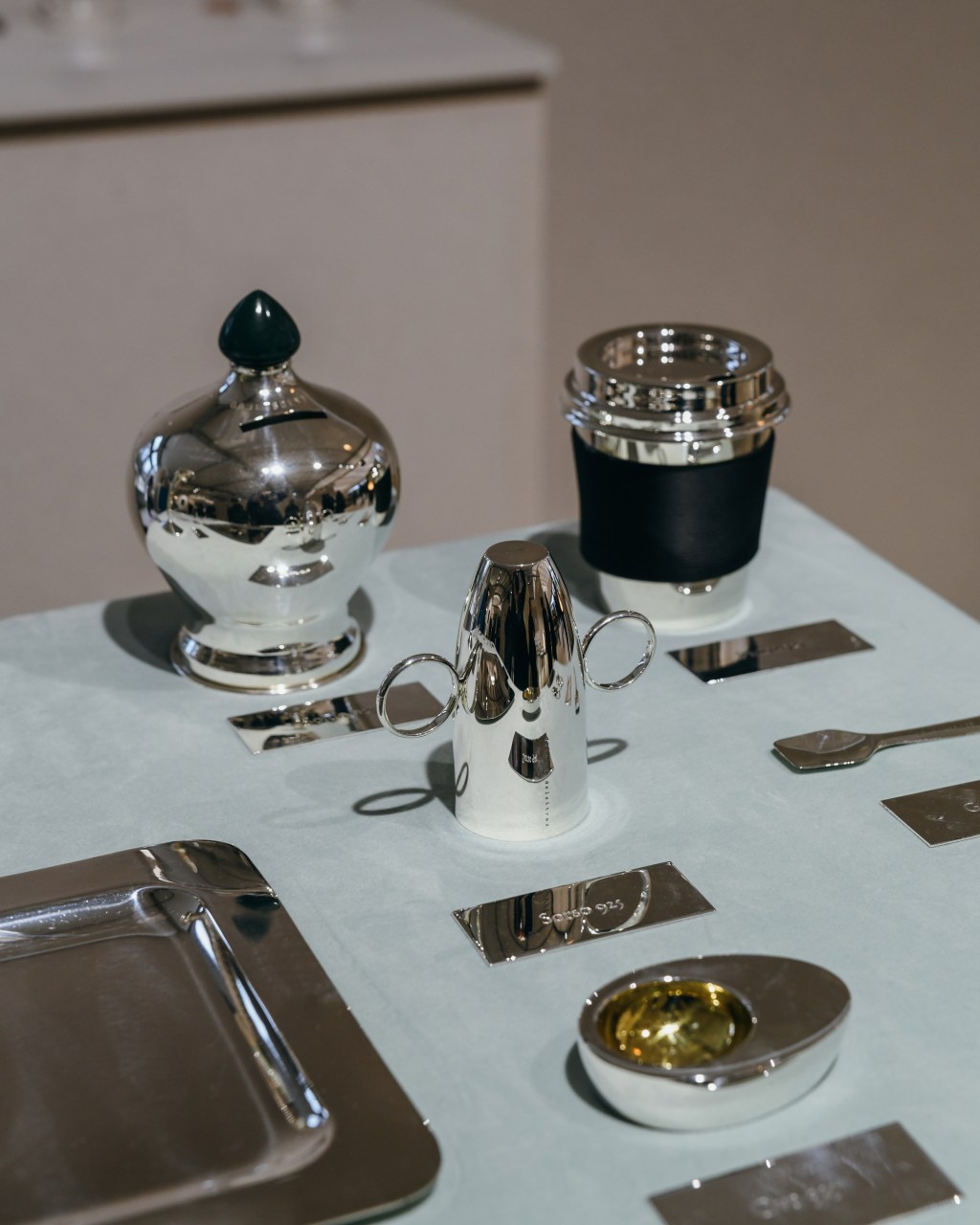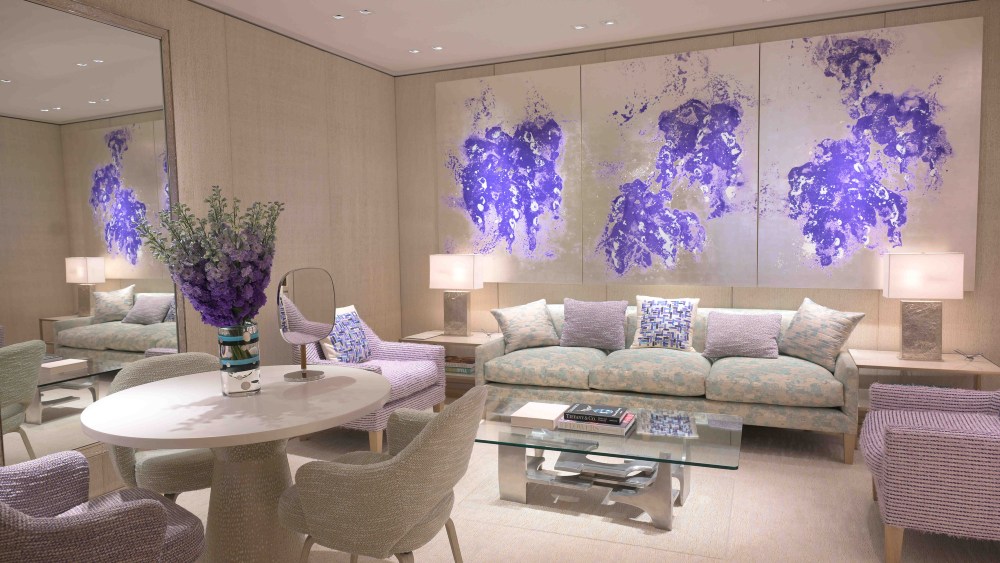For Delfina Delettrez Fendi, there’s a silver lining to everything — even getting your caffeine fix from a capsule.
“It’s the moments and decisions of every day that tell the quality of people’s lives and preserve their memories,” she says. “I like to choose simple objects and create silver [versions] that accompany everyday life, making the even the most common gestures unique.”
The everyday will no doubt feel unique when supplemented with the “Delfina Delettrez Objets de Vie” line. This series of 13 sterling silver items ranges from a small ice cream spoon and a letter opener topped with an antique-looking coin to a graphic egg holder and a coffee-to-go cup, all crafted in Rome.
Delettrez Fendi started thinking about creating these silver objects when she moved into a new home.
“I wanted to create my own silverware wardrobe,” says the jeweler. “I am fascinated and inspired by everything that involves ceremony and the ceremonials from the jewelry world are very similar to [those] of receiving at home.”
And hosting is akin to an art form in her opinion. “I like to surprise my guests whether it’s at home or at one of my jewelry presentations and that my objects can become an element of conversation,” the jeweler continues, who used a machine employing gravitational technology to make water flow upward from the tap for a previous event.
While that’s not something easily replicable at home, her Puro 925 water goblets come with a crystal geode attached by a silver chain. “Since silver purifies and makes the water ‘clean’ with its antibacterial action, I wanted to create infusions of crystals that act as activators of the water,” she explains. “Each crystal adds a specific property to your water, giving this sleek and modern glass a mystical and spiritual soul.”
More than a departure from her work as a jeweler, both for her eponymous label and the high jewelry lines of Fendi, she sees this as a continuation.
“I’m always looking for new ways to adorn the body with jewelry, so I had the same approach with my silver shot glass,” she explains. “It’s a glass you wear on your finger like a piece of jewelry, creating a new way of holding the glass, creating my own personal gesture.”

In fact, the jeweler prefers to define herself as a silversmith. “It is an ancient, very Italian, humble profession, a philosophy of living with silver,” in her opinion.
There might be a bit of predestination at play. “I was definitely born with a silver spoon in my mouth,” she jokes. “It started with the [one] given to me at birth. It was tradition at the time to offer very decorated and ornate spoons. The one I received was very modern.”
Made by Austrian architect and designer Josef Hoffmann, a central figure of the Viennese Modernist and Life Reform movements, its clean and rigorous lines, with an ergonomic design and decorations save for a double mark to identify the designer and craftsman, left a profound influence on Delettrez Fendi.
“It is no coincidence that I apply the same principles to my objects, I want the stamping to always be very visible,” she says. “I treat it as a decoration, an added value to the design.”
On hers, “Delfina Delettrez Objets de Vie” reads at once as signature and manifesto.
Her aim is to update silverware’s vernacular to make it appeal to new generations, or more aptly create “a new tradition of silversmithing, with new experiences, wisdom and vision,” she says.
Case in point: the ice cream cone, entirely crafted, distinctive biscuit patterns and all, in sterling silver, was her first design. “I like the idea of fossilizing a shape that is a reminiscence of childhood,” she said. “Even if in my grandmother’s house, ice cream was strictly eaten in silver cups because silver is a thermal conductor.”
Something else she likes to build into her work is the combination of practicality with aesthetics. “I like objects that speak for themselves and that don’t have to be too explained,” she says.
But that also leaves room for interpretation. The cone could be recast as a single flower vase — or be used to serve caviar, as it was during a recent Paris presentation.
Though silverware remains rooted in the past, she likes the idea of bringing it forward. “The contemporary approach to silverware is characterized by simple shapes and clean lines,” she says. “It’s the result of a new curiosity and evolving tastes.”

Self-taught Italian silversmith and designer Lino Sabattini is another influence. “I have a fish holder of his that turns the conversation more towards aesthetics and food every time I bring it to the table,” she notes.
And another of today’s tastes is attention to the environment. “There is certainly a theme,” she says. “Fossilizing and making reusable objects from those that could be disposable or deteriorate over time like a coffee capsule or to-go cup.”
That’s a departure from recent decades, where silverware had fallen out of favor, considered fussy or too onerous to be lived with.
“Silverware collections live through generations and are not always appreciated by their new owners,” regrets Delettrez Fendi. “But I believe that in a world that has now understood we need to consume less and better, it will be inevitable.”
Plus, she’d like everyone to fall in love with silver. “It’s such a living material,” she says. “You have to take care of it and the more time passes, the more beautiful it becomes.”



